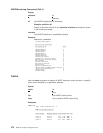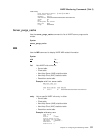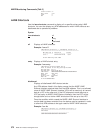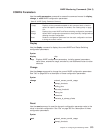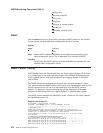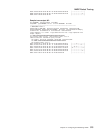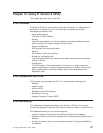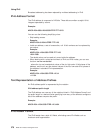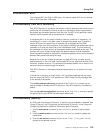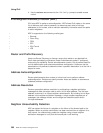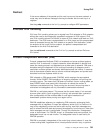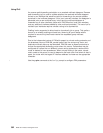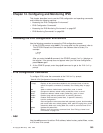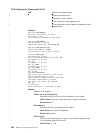
Chapter 13. Using IP Version 6 (IPv6)
This chapter describes how to use IPv6.
IPv6 Overview
IP Version 6 (IPv6) is a new version of the Internet Protocol. It is designed as a
successor to IP Version 4 (IPv4). The following list identifies some of the
advantages provided by IPv6:
v Large address space
IPv6 uses a 128-bit address.
v Routing
Using the large address size, IPv6 provides an hierarchical address scheme
which allows you to create a flexible routing hierarchy.
v Ease of configuration
NDP provides host autoconfiguration.
v Security
IPv6 makes IP Security mandatory.
v Support for multimedia traffic
The IPv6 header has priority and flow label fields to accommodate integrated
Quality of Service.
v Simplification
The IPv6 header is fixed and simplified. The router is no longer required to
perform fragmentation, simplifying packet processing. In addition, options type
data is implemented in extension headers that are only processed by the
destination node.
IPv6 Comparison with IPv4
IPv6 includes many changes from IPv4. The most significant changes are:
v Address
v Header format
v Minimum MTU
v Mandatory Path MTU discovery
v Mandatory IP security
v Neighbor Discovery Protocol (NDP)
IPv6 Addressing
IPv6 addressing increases the address from 32 bits to 128 bits. This increase
allows more degrees of hierarchy than the basic layers of network, subnet and host.
IPv6 addresses belong to one of three categories:
v Unicast. A packet is delivered to the interface identified by the address.
v Multicast. A packet is sent to all members of the multicast group identified by the
address.
v Anycast. A packet is sent to only the nearest member of the group identified by
the address.
© Copyright IBM Corp. 1994, 1998 377




